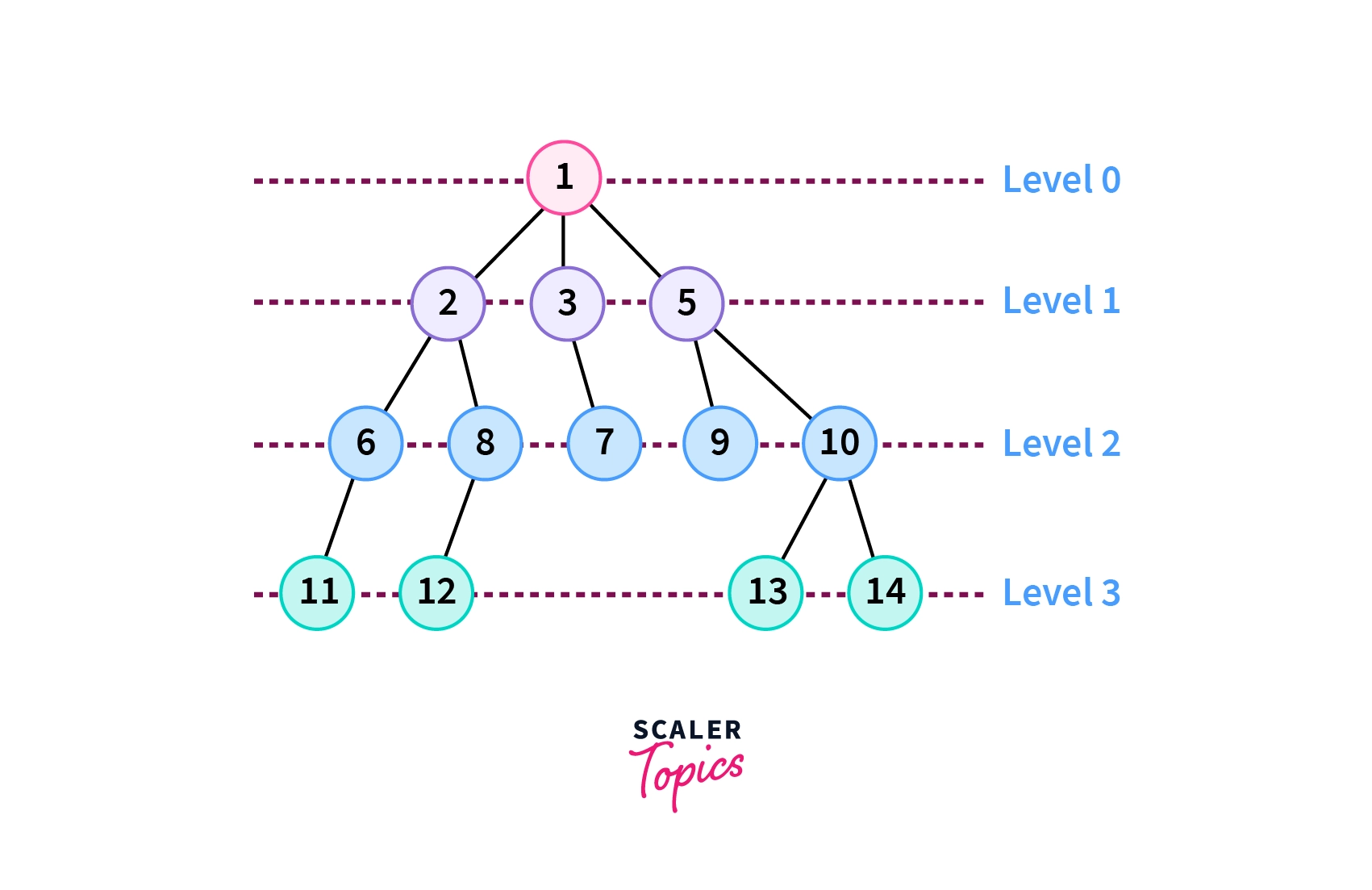Level Order Traversal of Binary Tree
Level Order Traversal is a technique used to traverse a Tree where all nodes at the same level are visited entirely before moving to the next level.

The level order traversal of this tree will be as follows:
Working of Level Order Traversal
Level order traversal involves visiting all nodes at a lower level before proceeding to any nodes at a higher level. This can be achieved through two main approaches:
- Naive method: Determining the height of the tree and traversing each level sequentially, printing the nodes of each level.
- Efficient method: Utilizing a queue data structure to traverse the tree level by level, ensuring nodes at the same level are visited before moving to the next level.
Level Order Traversal Using Recursion
- Finding Tree Height: Initially, find the height of the tree using a recursive function or any suitable method. This provides the total number of levels in the tree.
- Recursive Traversal with Level Tracking: Implement a recursive function that traverses the tree, maintaining the current height or level as a parameter.
- Printing Nodes at Target Level: Within the recursive function, whenever the current level matches the target level for which nodes need to be printed, print the value of the node.
- Recursion Termination: Ensure that the recursive function terminates appropriately when it reaches the end of the tree or the desired level.
Code Implementation in C++
Code Implementation in Java
Code Implementation in Python
Output:
Complexity Analysis
Time Complexity:
The level order traversal algorithm has a time complexity of O(N), where N denotes the count of total number of nodes in the skewed tree.
Space Complexity:
As for space complexity, it's O(1) if we only consider the variables used within the function. However, if we consider the recursion stack, then it can be O(N) in the worst case, particularly for skewed trees.
Level Order Traversal Using Queue
Level order traversal follows the principle of visiting nodes in lower levels before higher ones, similar to a queue. Nodes of lower levels are enqueued first, and when visiting a node, it's dequeued and its children are enqueued. This guarantees traversal from lower to higher levels orderly.
Code Implementation in C++
Code Implementation in Java
Code Implementation in Python
Output:
Complexity Analysis
Time Complexity:
The algorithm's time complexity is O(N), where N denotes the number of nodes present in the binary tree.
Space Complexity:
The space complexity is O(N) due to the queue used for level order traversal, which can hold up to N nodes at its maximum capacity.
Conclusion
- Level Order Traversal: It's a technique to traverse a tree where all nodes at the same level are visited before moving to the next level.
- Working Principle: Nodes at lower levels are visited entirely before proceeding to any nodes at higher levels.
- Two Approaches: It can be implemented using either a naive method or an efficient method utilizing a queue.
- Naive Method: Involves determining the height of the tree and sequentially traversing each level, printing the nodes of each level.
- Efficient Method: Utilizes a queue data structure to traverse the tree level by level, ensuring nodes at the same level are visited before moving to the next level.

